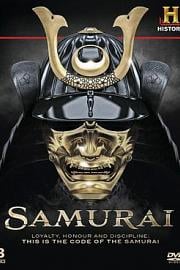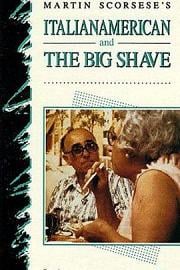
Legend of samurai sword (2009)
Before Emperor Meiji issued the abolition order in 1876, samurai swords were not only used as weapons for self-protection, but also regarded by the Japanese as a spiritual weapon symbolizing the traditional spirit of the nation. Now, although it no longer has practical value, it is undeniable that it still occupies an important position in the evolution of Japanese national beauty consciousness. The sword has double blades suitable for killing and stabbing, while the Japanese sword has only one edge, so when the two men confront each other, they must hold the knife with both hands to defend the enemy by chopping and splitting, so a well-preserved Japanese knife needs to have three basic conditions. that is, the edge is not broken, the body is not bent and deformed, and the edge is still sharp, but what is enough to make this knife immortal lies in the streamline design in line with aesthetics and craftsmanship. Japanese Dao is divided into Tai Dao, Dao, Dao and short Dao according to its shape and length. Tai Dao and Daodao are more than 60 cm long. From the end of the Heian era (12th century) to the early Muromachi era, it was popular to wear Tai Dao in horse or ceremonial ceremonies; from the middle of the Muromachi era (the second half of the 15th century) to the end of the Edo period (mid-19th century), it began to use a knife, which is called a 'threat gap' if the knife is between 30 cm and 60 cm long, and less than 30 cm. Before Emperor Meiji issued the abolition order in 1876, samurai swords were not only used as weapons for self-protection, but also regarded by the Japanese as a spiritual weapon symbolizing the traditional spirit of the nation. Now, although it no longer has practical value, it is undeniable that it still occupies an important position in the evolution of Japanese national beauty consciousness. The sword has double blades suitable for killing and stabbing, while the Japanese sword has only one edge, so when the two men confront each other, they must hold the knife with both hands to defend the enemy by chopping and splitting, so a well-preserved Japanese knife needs to have three basic conditions. that is, the edge is not broken, the body is not bent and deformed, and the edge is still sharp, but what is enough to make this knife immortal lies in the streamline design in line with aesthetics and craftsmanship. Japanese Dao is divided into Tai Dao, Dao, Dao and short Dao according to its shape and length. Tai Dao and Daodao are more than 60 centimeters long. from the end of the Heian era (12th century) to the early Muromachi era, it was popular to wear Tai Dao on horses or ceremonial ceremonies; from the middle of the Muromachi era (the second half of the 15th century) to the end of the Edo period (the middle of the 19th century), it began to use a knife, which is called a "threat gap" if it is between 30 cm and 60 cm, and a short knife less than 30 cm. To achieve a good knife requires continuous smelting: high temperature heating repeatedly folding, hammering, especially in order to make the edge more sharp, the use of local quenching. And the problem that toughness and hardness can not be taken into account for thousands of years has been solved by changing the steel structure. How to appreciate a good knife? Through the appearance to peep into the quality of the knife, the most significant is the natural lines produced by folding and forging-ground muscle. The curvature must be elegant, that is, the so-called knife posture, and at the same time, the shape is symmetrical and the cutting edge is also very exquisite, even the matching scabbard texture and pattern and the special design of winding the revolving rope of the handle are extremely exquisite, so although the forging method is well known, only a very small number of well-tempered swords will be sincerely accepted as a part of the body by samurai and handed down from generation to generation.
Before Emperor Meiji issued the abolition order in 1876, samurai swords were not only used as weapons for self-protection, but also regarded by the Japanese as a spiritual weapon symbolizing the traditional spirit of the nation. Now, although it no longer has practical value, it is undeniable that it still occupies an important position in the evolution of Japanese national beauty consciousness. The sword has double blades suitable for killing and stabbing, while the Japanese sword has only one edge, so when the two men confront each other, they must hold the knife with both hands to defend the enemy by chopping and splitting, so a well-preserved Japanese knife needs to have three basic conditions. that is, the edge is not broken, the body is not bent and deformed, and the edge is still sharp, but what is enough to make this knife immortal lies in the streamline design in line with aesthetics and craftsmanship. Japanese Dao is divided into Tai Dao, Dao, Dao and short Dao according to its shape and length. Tai Dao and Daodao are more than 60 cm long. From the end of the Heian era (12th century) to the early Muromachi era, it was popular to wear Tai Dao in horse or ceremonial ceremonies; from the middle of the Muromachi era (the second half of the 15th century) to the end of the Edo period (mid-19th century), it began to use a knife, which is called a 'threat gap' if the knife is between 30 cm and 60 cm long, and less than 30 cm. Before Emperor Meiji issued the abolition order in 1876, samurai swords were not only used as weapons for self-protection, but also regarded by the Japanese as a spiritual weapon symbolizing the traditional spirit of the nation. Now, although it no longer has practical value, it is undeniable that it still occupies an important position in the evolution of Japanese national beauty consciousness. The sword has double blades suitable for killing and stabbing, while the Japanese sword has only one edge, so when the two men confront each other, they must hold the knife with both hands to defend the enemy by chopping and splitting, so a well-preserved Japanese knife needs to have three basic conditions. that is, the edge is not broken, the body is not bent and deformed, and the edge is still sharp, but what is enough to make this knife immortal lies in the streamline design in line with aesthetics and craftsmanship. Japanese Dao is divided into Tai Dao, Dao, Dao and short Dao according to its shape and length. Tai Dao and Daodao are more than 60 centimeters long. from the end of the Heian era (12th century) to the early Muromachi era, it was popular to wear Tai Dao on horses or ceremonial ceremonies; from the middle of the Muromachi era (the second half of the 15th century) to the end of the Edo period (the middle of the 19th century), it began to use a knife, which is called a "threat gap" if it is between 30 cm and 60 cm, and a short knife less than 30 cm. To achieve a good knife requires continuous smelting: high temperature heating repeatedly folding, hammering, especially in order to make the edge more sharp, the use of local quenching. And the problem that toughness and hardness can not be taken into account for thousands of years has been solved by changing the steel structure. How to appreciate a good knife? Through the appearance to peep into the quality of the knife, the most significant is the natural lines produced by folding and forging-ground muscle. The curvature must be elegant, that is, the so-called knife posture, and at the same time, the shape is symmetrical and the cutting edge is also very exquisite, even the matching scabbard texture and pattern and the special design of winding the revolving rope of the handle are extremely exquisite, so although the forging method is well known, only a very small number of well-tempered swords will be sincerely accepted as a part of the body by samurai and handed down from generation to generation.
720P
| Title | Download | Size | Publish |
|---|---|---|---|
| Samurai.Sword.The.Making.of.a.Legend.2007.BDRip.720p3.5G | N/A | 2 Year ago |
HD
| Title | Download | Size | Publish |
|---|---|---|---|
| Samurai.Sword.The.Making.Of.A.Legend.2008.Blu-ray.REMUX.H264.1080i.DD51.MySilu-13.7G | N/A | 54 Year ago |
Similar Movies
 Brats(2024)
Brats(2024) Janis: Little Girl Blue(2015)
Janis: Little Girl Blue(2015) 38 at the Garden(2022)
38 at the Garden(2022) Document of the Dead(1980)
Document of the Dead(1980) The Yukon Assignment(2018)
The Yukon Assignment(2018)
 The Last Man on the Moon(2014)
The Last Man on the Moon(2014)
 Italianamerican(1974)
Italianamerican(1974) Best of Enemies(2015)
Best of Enemies(2015)